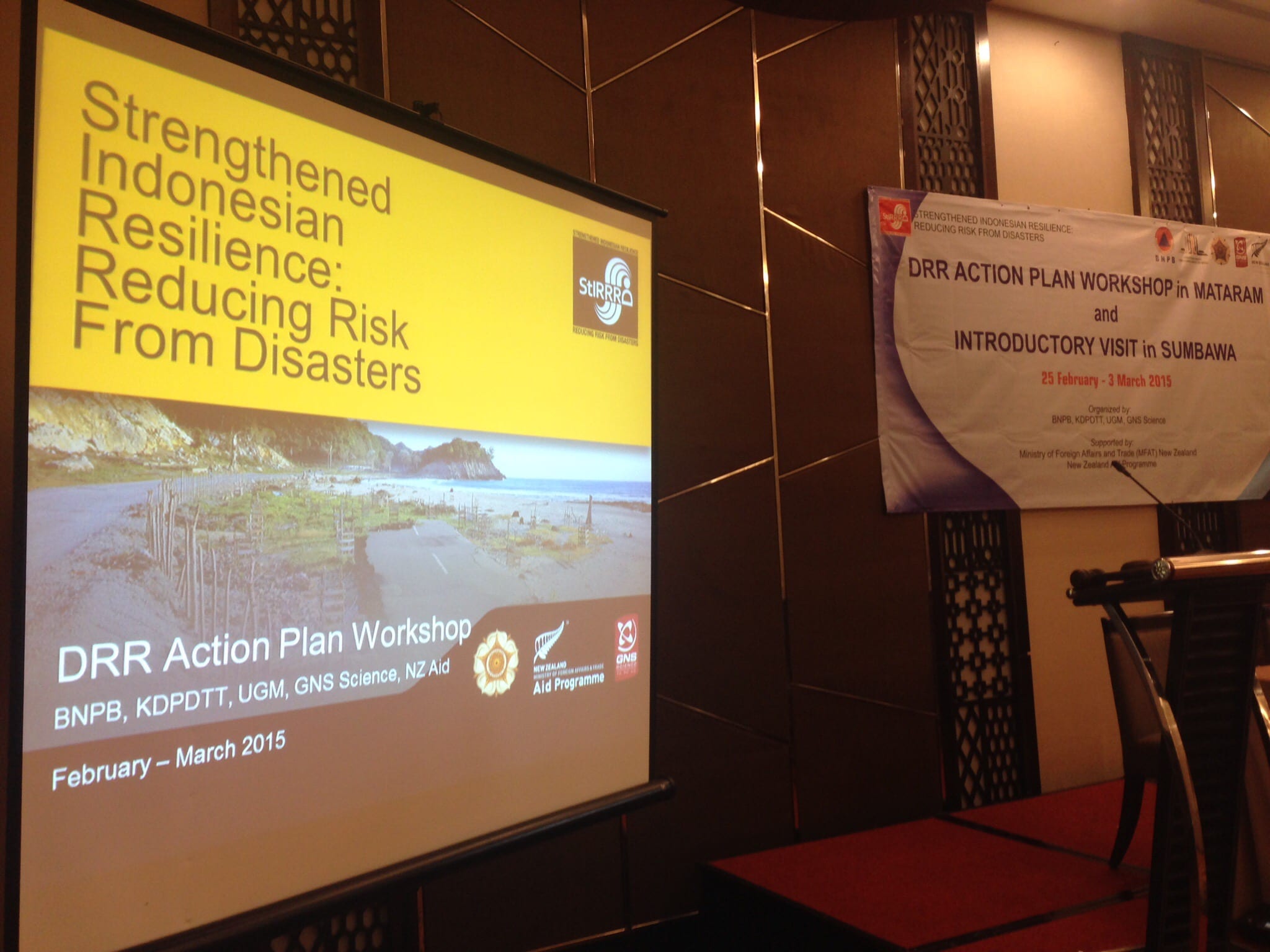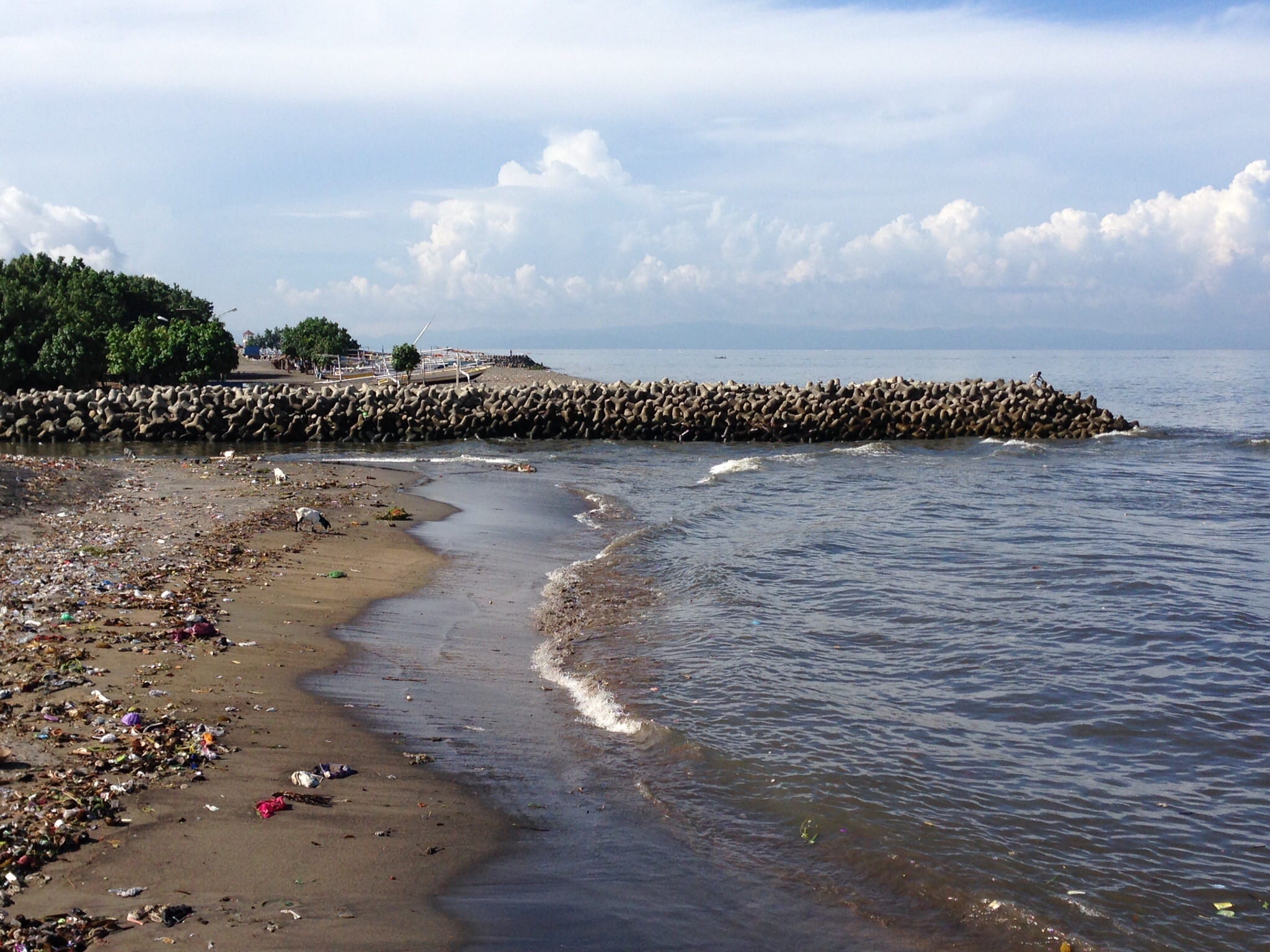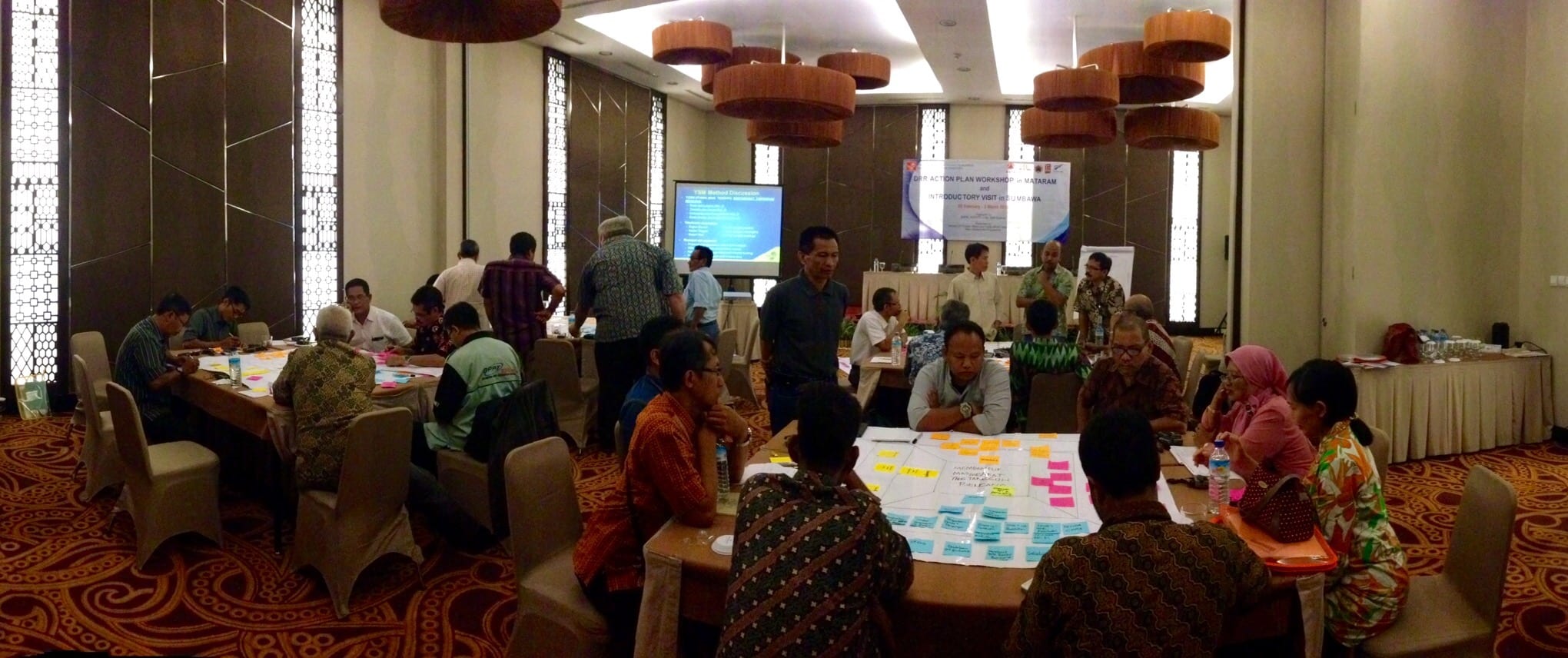Part of the StIRRRD team was recently back to Mataram, in the island of Lombok, in the West Nusa Tenggara province. Last year’s introductory visit highlighted main issues around vulnerability to coastal erosion, floods, earthquakes and tsunami. This year, we came back to run a DRR Action Plan workshop with our local BPBD partners, officials and local university. Aside the usual suspects from UGM, GNS Science and NZ MFAT, the StIRRRD team was joined by former-GNS tsunami expert Gegar Prasetya and flood expert James Flanagan from the Wellington Regional Council.
Day one focused on technical presentations about hazards and DRR by the group, followed by discussions with the participants. The audience learned about a wide range of topics, including DRR, impact of natural hazards and early warning systems.

The morning of day two was spent visiting the Ampenan coastal area, to the west from Mataram. Ampenan is vulnerable to high tides, storm surges and tsunami.


In the afternoon we got into the thick of it: how to design a DRR action plan using the Yonmenkaigi System (YSM). The YSM was designed in Japan and applied by UGM for DRR in Indonesia. It fosters group discussions, gap analysis and ultimately leads to the participants coming up with a cross agency/community, jointly agreed-upon, timelined action plan around a specific issue. Some themes chosen by the participants in Mataram included improved resilience to earthquakes and tsunami.


Beyond the workshop, this was once again a great opportunity for the various partners in NTB to interact and exchange with peers in disaster management agencies, local government, NGO’s and experts from Indonesia and New Zealand.
